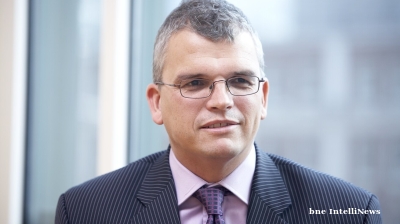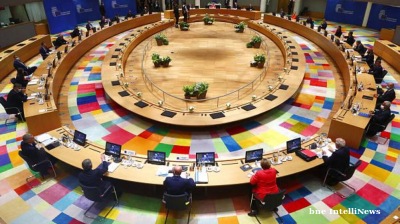2016 has turned out to be one of the most extraordinary years in recent history – not only from a political angle but also for investors.
In the first weeks of the year, stock markets corrected by more than 10% globally, market volatility surged, and crude oil dropped to $26 per barrel (Brent). Ten months later, the S&P 500 and the Euro Stoxx 600 are up 23% and 17% respectively from their lows, the MSCI Emerging Markets Index has gained more than 20% since mid-January, the implied market volatility as measured by the VIX-index is more than 50% below its highs in the first quarter, the price of Brent has more than doubled, and industrial metals – on average – have gained 35%.
The remarkable fact, however, is not that markets bounced back – that is what markets usually do at some point – but that this recovery took place against a backdrop of major political shocks, mediocre global growth and a US central bank clearly tilting towards monetary tightening. The latter has just been confirmed on December 14, when the Fed funds rate – as expected – was lifted by 0.25% and the central bank’s guidance suggests three more hikes to come in 2017.
Stock markets in Emerging Europe broadly followed global trends, with the MSCI equity index for the region gaining 16% year-to-date (to December 14). However, Russia, Turkey and Poland – the three largest markets in the region (in this order) – performed quite differently, particularly if their performance is expressed in common currency.
2016 saw Russia ahead; Poland, Turkey trailing
Russia has been the best-performing market among the three main markets in Emerging Europe this year. MICEX, the key index for Moscow stock listings, surged 26% until mid-December. Russian stocks benefitted from the rebound of oil prices, the gradual improvement of the country’s economy after two years of recession and, most recently, from the expectation that the election of Donald Trump as the next US president could lead to the termination of existing US and European sanctions against the country.
Poland and Turkey did not enjoy such tailwinds. Stock indices in both markets posted small gains – 8% in both markets until mid-December – relative to Russia and to the broader emerging market universe. One reason was that, other than Russia, neither Poland nor Turkey are beneficiaries from the turnaround in oil and other commodities during the year. But more importantly, in both countries domestic politics has become a risk factor for investors, particularly for equity investors.
In Poland, the political leadership has embraced a strategy of “economic patriotism”, while regulatory as well as tax risks increased. In Turkey, the attempted coup against the AKP government, the alienation between the country and the EU, and its exposure to geopolitical risks has hurt the economy and lifted the risk premium. It is not surprising that, after currency developments are taken into account, the underperformance of Polish and Turkish equities relative to Russia in 2016 even widens,. In euro-terms, the main Russian stock index has gained more than 50% since the beginning of the year, while the Polish WIG 30 only gained 4.7% and the Turkish BIST 30 is down 8%.

2017 to see growth tailwinds, interest risks, more political uncertainty
In recent months, the global backdrop for equities has changed, with implications for Emerging Europe.
The deflation threat – the fear of falling prices and economic stagnation – that dominated the mind of economic policymakers and investors in 2015 and early 2016 has faded away. It has been replaced by the hope for a “reflation trade” that rests on the expectation of equity markets receiving support from expansionary economic policies and a pick-up in inflation. This shift started already during the summer, but it received a massive boost from Donald Trump’s election success. Somewhat surprisingly, the market is fully buying into the upside of the next president’s expansionary fiscal plans, while ignoring the long-term negative impact of his protectionist agenda.
The new global regime is characterised by the expectation of faster global growth, a likely pick-up in global inflation, higher US interest rates and a strong US dollar. A majority of analysts also assume that emerging markets, as a group, will prove resilient to higher US rates, although some economies will suffer more than others.
And the winner is …
Among the big three European equity markets, Russia will likely turn out to be the clear winner in the new regime. It is gaining from stronger commodity prices that go along with faster global growth; it is relatively resilient to higher US rates due to moderate external debt – both public and corporate; and it is set to benefit from the less-confrontational position of the president-elect vis-à-vis Russia.
The easing or even complete elimination of Western sanctions is looking now like a realistic possibility, particularly because the European front against Russia seems to be crumbling as well. However, the termination of Western sanctions would not really be a game-changer for Russia. Their impact on the country’s potential or actual growth rate is minor, and their abolition will only happen over an extended period of time and will be accompanied by all sorts of diplomatic bargaining on intermediate steps. The impact on Russian equities and on the ruble would probably be mild, creating trading opportunities rather than affecting the overall investment case.
The key support for Russian equities in 2017 will be the continued recovery of the economy, mostly driven by the stronger oil price. After two years of recession, Russian GDP is expected to grow by more than 1%, maybe even close to 2%, in 2017. There is room for both inflation and interest rates to fall, and private consumption growth will likely turn positive in the second quarter. Despite their strong performance in 2015 and 2016, equities are still not expensive on average, trading on a forward price/earnings ratio of about 7x.
Turkey: international headwinds, domestic problems
For Turkey, in contrast to Russia, international developments are not working in its favour at present, nor will they for the foreseeable future. 2016 has not been the best year for investors in Turkey, and 2017 will likely remain challenging as well. Higher US rates, a stronger US currency and higher oil prices are all massive negatives for the Turkish economy, which has a high foreign (private) debt and is a net oil and commodity importer. In addition, the key problems of 2016 – terrorism at home; its exposure to geopolitical conflicts in its neighbourhood; domestic political uncertainties; and tensions with the EU – will not go away in 2017.
The deteriorating backdrop is already being reflected in the currency and in key macroeconomic data. The Turkish lira has been among the weakest currencies this year and will remain under pressure, particularly as a result of higher US rates. Growth has turned negative in the third quarter. It is assumed to return to positive territory in the fourth quarter, but the current consensus for 2017 of 3.1% looks very ambitious.
Turkish equities look cheap at a price/earnings ratio of below 8x, but at present it is hard to find a trigger for a rebound.
Poland losing its shine
Poland still offers solid macroeconomic fundamentals. At expected growth rates of 2.8% and 3.2% in 2016 and 2017 (Bloomberg consensus) respectively, the economy continues to outgrow the Eurozone by 1-2 percentage points a year. The current account deficit is small, inflation non-existent and the fiscal deficit – while not negligible at 3% of GDP in 2017 – is not alarming.
However, notwithstanding this solid macro-picture, equity investors’ enthusiasm for Poland has significantly cooled over the past 15 months or so. The new government that came to power in October 2010 has sent a series of adverse signals to the market. Talks about the “re-Polonization” of the financial sector and – following Victor Orban’s example in Hungary – of “economic patriotism” as a guiding principle of economic policy sound scary, and have been the main reason for the 20%-plus underperformance of Polish equity indices against the MSCI Emerging Markets Europe Index since the political realignment following the 2015 election.
Uncertainty remains high and will likely weigh on performance in 2017. The list of unresolved issues includes the issue of Swiss franc loans and how the banking system will be affected by it; the reform of the pension system; and tax reform, where an increase of taxes on higher incomes may be needed to finance the government’s social giveaways.
Still, it is worthwhile to look at the Hungarian example, which seems to provide the template of what the new government is trying to achieve. The Hungarian stock market (admittedly a very skewed segment of the overall economy) underperformed in the first three years after Prime Minister Orban started to implement his programme of “economic patriotism”, but has strongly outperformed its peers since the beginning of 2015 – even in hard currency terms (Fig.2).
So Hungary’s case suggests that there is hope for Polish stocks as well after the main uncertainties are removed. But don’t hold your breath – it may get worse before it will get better.

Opinion

COMMENT: US-brokered Armenia-Azerbaijan peace deal exposes Russia’s strategic failures
The recent peace breakthrough between Armenia and Azerbaijan is a major diplomatic win for the United States and a setback for Russia, according to a new report published by the Atlantic Council.

COMMENT: Why Beijing will never take Taiwan
Xi Jinping needs to think again before he sends so many young Chinese men and women to their deaths on Taiwan, for if the PLA does one day dare to land, they will be buried here.

COMMENT: Ukraine’s coming financial storm
“A crisis is drawing ever closer. It will break in Ukraine, but it won’t begin on the frontlines, where the country’s battle-weary brigades continue to impose a brutal cost on the Russian invader," writes Timothy Ash of BlueBay Asset Management.

BEYOND THE BOSPORUS: Performance postponed. Hotly anticipated “CHP” trial pushed into October
Every Turk up and down the country has an opinion on what Erdogan is up to.



